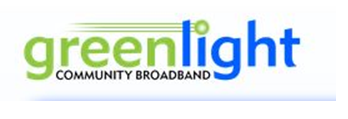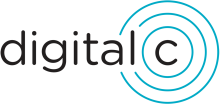
Which would you choose — a broadband subscription with download speeds of 15 Megabits per second (Mbps) or a much faster gigabit plan for the same price?
The choice is clear, and it’s one that low-income households in Hillsboro, Oregon, may soon make, thanks to the city’s planned municipal fiber network. Earlier this year, Hillsboro announced that its new broadband utility, HiLight, will offer gigabit connectivity for only $10 per month to qualified low-income residents. In comparison, Comcast’s Internet Essentials program provides low-income families in the city speeds of just 15 Mbps for roughly the same monthly cost.
Hillsboro isn’t the first community to leverage its publicly owned fiber network for digital inclusion efforts. Municipal networks across the country are providing low-cost connectivity, affordable devices, and digital skills trainings to their communities, bringing the educational, economic, and healthcare benefits of broadband access to more people.
Defining Digital Inclusion
Digital inclusion is the practice of ensuring digital equity, which the National Digital Inclusion Alliance defines as “a condition in which all individuals and communities have the information technology capacity needed for full participation in our society, democracy and economy.”
Broadband availability is only one of many “digital divides” that explain who is and isn’t connected. For instance, income and affordability also play a role. According to the Pew Research Center, adults with annual incomes of $75,000 or more are almost twice as likely to have broadband access at home than adults with annual incomes of less than $30,000. Among those without home broadband access, the high cost of a subscription is most commonly cited as the top reason why, Pew reports.
 To succeed, digital inclusion practitioners must address the many barriers to digital equity, including unaffordable broadband subscriptions, lack of access to devices, and insufficient digital skills.
To succeed, digital inclusion practitioners must address the many barriers to digital equity, including unaffordable broadband subscriptions, lack of access to devices, and insufficient digital skills.
Affordable, Connected Housing
The Greenlight municipal fiber network in Wilson, North Carolina, is a prime example of how public infrastructure enables community investment in digital inclusion efforts. In 2016, Greenlight began offering public housing residents the option to subscribe to 50 Mbps symmetrical Internet access for only $10 per month. More than half of all residents participate in the program. To complement the connectivity, the Wilson Housing Authority also provides residents with digital literacy classes through a partnership with Kramden Institute of Durham.
In her book Fiber: The Coming Tech Revolution And Why America Might Miss It, Susan Crawford shared the story of how Tiffany Cooper, a single mother of three living in public housing, used Greenlight’s affordable connectivity to further her nursing career through online education. Having high-speed Internet access at home also allowed her sons to complete online schoolwork, which improved their grades. The broadband subscription was “the best thing that could have happened to me,” she told Crawford.
In addition to the public housing program, Greenlight provides free broadband access to the local library, public Wi-Fi hotspots, and two afterschool programs that cater to underserved youth. More recently, Greenlight introduced a prepay billing option that's accessible to subscribers with poor credit history.
Closing the Homework Gap
Some communities with municipal fiber networks have focused on bringing students access to high-quality broadband at home to narrow the “homework gap.” The Pew Research Center found that 15 percent of all households with school-aged children do not have high-speed Internet access at home, with low-income, black, and hispanic households disproportionately affected. While schools, libraries, and other public spaces often offer free Wi-Fi access, not having connectivity at home puts these students at a competitive disadvantage and limits their educational opportunities.
 To address this disparity, Longmont, Colorado’s renowned NextLight network has a new program called “Sharing the NextLight.” The program offers free 25 Mbps connectivity to families with students who qualify for free or reduced price lunches, funded by community donations. “The Internet is more vital to students than ever,” said Susan Wisecup, the acting general manager of Longmont Power and Communications, in a press release. “[T]o support their child’s academic success, families ideally should have a fast and reliable connection in their own homes.”
To address this disparity, Longmont, Colorado’s renowned NextLight network has a new program called “Sharing the NextLight.” The program offers free 25 Mbps connectivity to families with students who qualify for free or reduced price lunches, funded by community donations. “The Internet is more vital to students than ever,” said Susan Wisecup, the acting general manager of Longmont Power and Communications, in a press release. “[T]o support their child’s academic success, families ideally should have a fast and reliable connection in their own homes.”
In Iowa, Cedar Falls Utilities (CFU) has also partnered with local schools to bring affordable Internet access to families that qualify for the free and reduced school lunch program. Through the new initiative, connect>CF, eligible households can either subscribe to a 15 Mbps, $5 per month plan that only the student can use or accept a $15 per month discount on any of the municipal fiber network’s standard subscription tiers. The Cedar Falls School District already issues laptops to middle and high school students, so connect>CF will help students use those devices to their full potential.
To keep students connected, EPB Fiber in Chattanooga, Tennessee, has taken a similar approach to NextLight and CFU. EPB’s NetBridge program offers families that are eligible for free and reduced-price lunches a 300 Mbps broadband subscription at the discounted price of $26.99 per month. Though not as affordable as the other programs, this is the lowest price EPB can legally offer because state law preempts the city from further subsidizing the cost of Internet access.
 In addition to NetBridge, Tech Goes Home Chattanooga, which is operated by the city's nonprofit partner the Enterprise Center, offers digital literacy training to all ages. “It’s all about making sure that more people in our community are not only signing up for the Internet, but learning how to use it,” Mayor Andy Berke told VentureBeat. Upon completion of the training program, participants can purchase a discounted laptop for $50.
In addition to NetBridge, Tech Goes Home Chattanooga, which is operated by the city's nonprofit partner the Enterprise Center, offers digital literacy training to all ages. “It’s all about making sure that more people in our community are not only signing up for the Internet, but learning how to use it,” Mayor Andy Berke told VentureBeat. Upon completion of the training program, participants can purchase a discounted laptop for $50.
Speed Demons
Municipal networks continue to push connectivity costs lower and speeds higher for low-income households. When Hillsboro’s fiber network launches, HiLight will offer low-income residents gigabit plans for only $10 per month. Hillsboro residents who don’t qualify for HiLight’s low-cost offering will still be able to subscribe to a gig connection for an affordable $55 per month — one of the lowest prices in the country. Early construction is set to include areas where most residents currently lack access to affordable connectivity.
Fort Collins, Colorado, is also planning to provide low-income residents gig speeds on its recently launched Connexion fiber network. City leaders have not confirmed the details yet, but they expect to offer a $20 gigabit connection to households earning less than 165 percent of the federal poverty line.
Municipal Advantage
Communities with publicly owned networks are well-positioned to develop digital inclusion initiatives. For one thing, control of the broadband infrastructure gives cities the opportunity to set their own prices and establish their own programs.
Additionally, close relationships with other city departments and community organizations give municipal networks an advantage over other providers. These connections enable a more comprehensive approach to digital inclusion that incorporates affordability, access to devices, and digital literacy across many city programs.
 Most importantly, because local governments are motivated by community benefit not maximizing profits, municipal networks are driven to develop the best digital inclusion offerings possible. Will Aycock, general manager of Greenlight, explained that distinction in Community Broadband Bits episode 236 on the utility’s public housing program:
Most importantly, because local governments are motivated by community benefit not maximizing profits, municipal networks are driven to develop the best digital inclusion offerings possible. Will Aycock, general manager of Greenlight, explained that distinction in Community Broadband Bits episode 236 on the utility’s public housing program:
“One unique difference for community networks is our top priorities are supporting the economic health of the community and enhancing the quality of life of our citizens and helping them to build a better life.”
Celebrate Digital Inclusion Week by asking your local government what they’re doing to promote digital inclusion and suggesting they look into these innovative examples.
Listen to the rest of the interview with Aycock about all Greenlight is doing to address digital inclusion:







